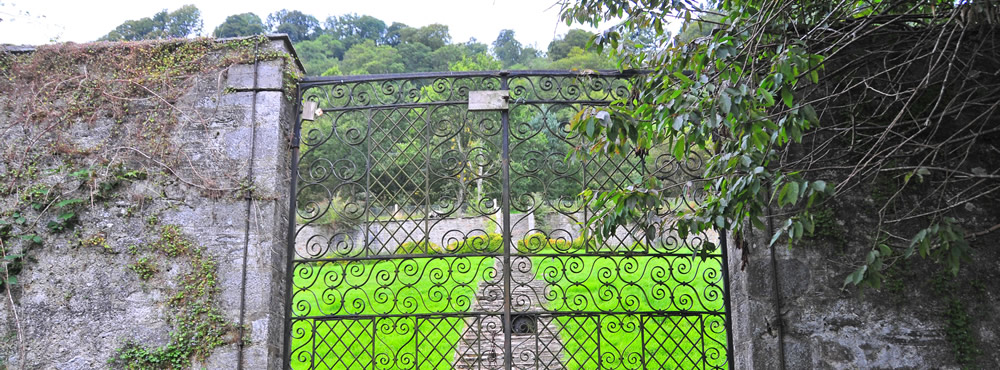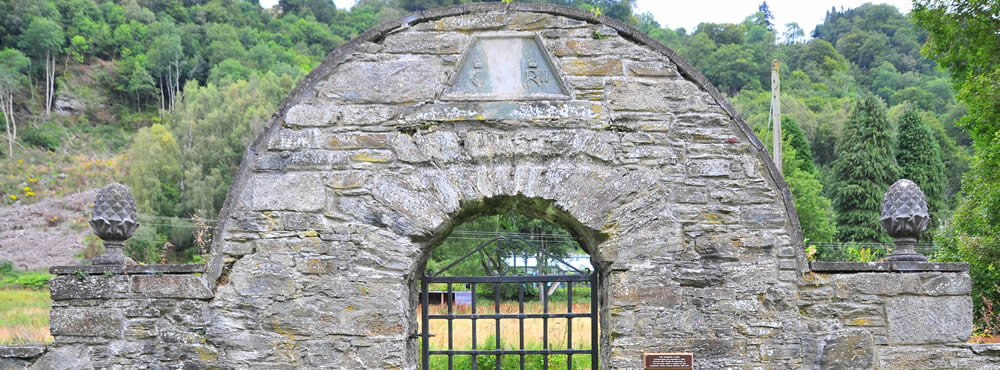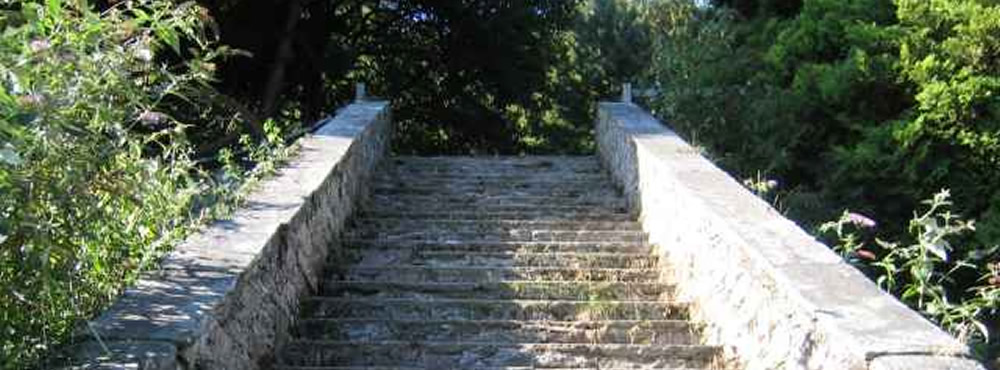Castle Menzies Walled Garden: a history
The earliest history of the Castle Menzies Walled Garden is not known. In 1746 Sir Robert Menzies of Menzies, 3rd Baronet, claimed for damages, part of which was for the rebuilding of high garden wall which had been torn down. The Red and White Book of Menzies (1894) records in the chapter covering Sir Robert's life that in 1747 he built the north wall of the terraced garden to plant fruit trees against it. (This could also refer to the present middle wall which still has several apple trees on it.) There are also still fruit trees on the present northernmost wall - e.g. plums, pears - some giving a good crop in good years despite lack of a gardener's tender care - but we do not know the age of these trees.
This chapter in the book also gives many details of the great trees of all types planted on the estate and says that fruit trees able to be cultivated in the open are in Scotland really thrive in this area. A special mention must be made of the gean or wild cherry (prunus avium) of Europe, W Asia and N Africa - ancestor of the cultivated sweet cherries:
"Castle Menzies Gean Trees from a very early date obtained celebrity all over the country. So famous indeed were these trees at one time, that their seed was sought from all parts of Great Britain, and large quantities were even sent abroad by request to all parts of the world. These Menzies gean trees were considered the oldest and finest gean trees extant; their fame has even been the poet's inspiration, there being an old Highland song composed in their praise, called "The Castle Menzies Gean Trees", which was so popular in its time as to be sung all over Scotland. They also have been the musician's subject for composition - one of the finest dance tunes handed down to us is "Castle Menzies Gein Trees Strethspey".
Sinclair's Statistical Account of 1791 also praises the work of Sir Robert (1706-86) both for the gardens and all the grounds: "Here are likewise two orchards which yield a great variey of apples, pears, cherries and the finest of geans both black and red."
Saving the Walled Garden
In 1957 when the Menzies Clan Society was just being brought together again after the disruption of two world wars, its members did not manage to acquire anything more than a few feet around Castle Menzies when purchasing it. Therefore when an opportunity to purchase the Walled Garden came in 1984, and although the Society still had a lot of work to do on the Castle itself, especially the Victorian wing which was in danger of being lost, the Society took the plunge and bought the Walled Garden. An appeal was organised by Mr J Menzies Thornton.
The Walled Garden proved very hard to tame over the following years. Several members of the Society did bits and pieces over the years to try to keep it tidy but a garden soon reverts to the wild, and rabbits do not help either. No-one lived near enough to keep up a sustained effort. To add some colour, climbing roses were put on the iron arches which we think might have once had fruit trees, perhaps peach, trained on them.
We have been open to ideas and in 1992 when the Secretary, Mrs Audrey C Paton, saw a challenge thrown out by the BBC Scotland television programme The Beechgrove Garden which had a "Hit Squad" to help people improve their gardens (long before the many make-over programmes currently on offer for house and garden make-overs) she put in an application. Up until then it had only been the usual small gardens which had been tackled. But, whether it was the size or the association with Archibald Menzies, our garden was chosen. In later years the programme moved into helping in large community schemes creating gardens on spare land, etc. so perhaps we helped develop the programmes too.
The enthusiasm of Jim and Walter from The Beechgrove Garden really astounded those of us working with them. We did not realize we had such a jewel (if only we had had more money and more time!). The following is a quote from the Menzies Clan Society's Magazine No. 15 (December 1992):
"The Hit Squad gardeners, Jim McKirdy and Walter Gilmour, were immediately appreciative of the size and complexity of the problem of developing the Gardens in a manner which would subsequently require a minimum of maintenance. The plan that was offered by these widely experienced experts was readily accepted. This was to turn the upper terrace into an arboretum commemorating Archibald Menzies and to grass the lower terrace to plant areas of decorative shrubs and heathers.
In the event, the programme resulted in the formation of a small herb garden at the lower end of the main steps and, after a necessary clearing of intrusive vegetation on the upper terrace, the planting of some 21 saplings of trees identified originally by Archibald Menzies. The Society was greatly in the debt of the Hit Squad, the Director Nick Ibbotson and his team and the BBC for their advice and for carrying out without cost to the Castle. This was a real start to the rehabilitation of the Walled Garden.
To make another short section of their programme, the BBC's Beechgrove Garden team returned around 3 years later and they were astounded at the growth rate of the new trees they had planted in the Archibald Menzies Arboretum. This was even better growth than would have been expected in the warmer and wetter Argyll Scottish West coast and that without much extra watering being able to be done to establish them because of the distance from water source and uphill carrying of heavy containers. Audrey Paton and a keen local gardener who has helped us at many different time, Mr Hamish MacDonald, took part in the second short film.
21st Century efforts
We hope shortly to publish here a description of our efforts since the year 2000.



